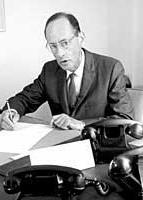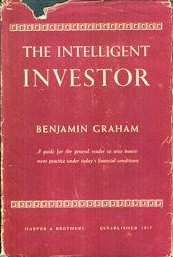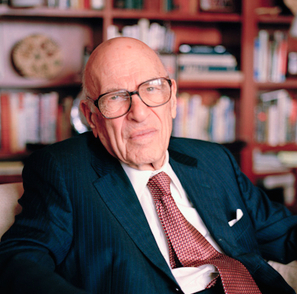Investment is traditionally defined as the "commitment of resources to achieve later benefits". If an investment involves money, then it can be defined as a "commitment of money to receive more money later". From a broader viewpoint, an investment can be defined as "to tailor the pattern of expenditure and receipt of resources to optimise the desirable patterns of these flows". When expenditure and receipts are defined in terms of money, then the net monetary receipt in a time period is termed as cash flow, while money received in a series of several time periods is termed as cash flow stream. Investment science is the application of scientific tools for investments.

Warren Edward Buffett is an American business magnate, investor, and philanthropist. He is currently the chairman and CEO of Berkshire Hathaway. He is one of the best-known fundamental investors in the world as a result of his immense investment success possessing a net worth of $104 billion as of March 2023, making him the fifth-richest person in the world.

Berkshire Hathaway Inc. is an American multinational conglomerate holding company headquartered in Omaha, Nebraska, United States. Its main business and source of capital is insurance, from which it invests the float in a broad portfolio of subsidiaries, equity positions and other securities. The company has been overseen since 1965 by its chairman and CEO Warren Buffett and vice chairman Charlie Munger, who are known for their advocacy of value investing principles. Under their direction, the company's book value has grown at an average rate of 20%, compared to about 10% from the S&P 500 index with dividends included over the same period, while employing large amounts of capital and minimal debt.

Benjamin Graham was a British-born American economist, professor and investor. He is widely known as the "father of value investing", and wrote two of the founding texts in neoclassical investing: Security Analysis (1934) with David Dodd, and The Intelligent Investor (1949). His investment philosophy stressed investor psychology, minimal debt, buy-and-hold investing, fundamental analysis, concentrated diversification, buying within the margin of safety, activist investing, and contrarian mindsets.

Value investing is an investment paradigm that involves buying securities that appear underpriced by some form of fundamental analysis. The various forms of value investing derive from the investment philosophy first taught by Benjamin Graham and David Dodd at Columbia Business School in 1928, and subsequently developed in their 1934 text Security Analysis.
Contrarian investing is an investment strategy that is characterized by purchasing and selling in contrast to the prevailing sentiment of the time.

David LeFevre Dodd was an American educator, financial analyst, author, economist, and investor. In his student years, Dodd was a protégé and colleague of Benjamin Graham at Columbia Business School.

Philip Arthur Fisher was an American stock investor best known as the author of Common Stocks and Uncommon Profits, a guide to investing that has remained in print since it was first published in 1958. Along with Thomas Rowe Price, Jr., Fisher is one of the early proponents of the growth investing strategy.

The Intelligent Investor by Benjamin Graham, first published in 1949, is a widely acclaimed book on value investing. The book provides strategies on how to successfully use value investing in the stock market. Historically, the book has been one of the most popular books on investing and Graham's legacy remains.
A margin of safety is the difference between the intrinsic value of a stock and its market price.

Security Analysis is a book written by professors Benjamin Graham and David Dodd of Columbia Business School, which laid the intellectual foundation for what would later be called value investing. The first edition was published in 1934, shortly after the Wall Street crash and start of the Great Depression. Among other terms, Graham and Dodd coined the term margin of safety in Security Analysis.
Growth investing is a type of investment strategy focused on capital appreciation. Those who follow this style, known as growth investors, invest in companies that exhibit signs of above-average growth, even if the share price appears expensive in terms of metrics such as price-to-earnings or price-to-book ratios. In typical usage, the term "growth investing" contrasts with the strategy known as value investing.
An undervalued stock is defined as a stock that is selling at a price significantly below what is assumed to be its intrinsic value. For example, if a stock is selling for $50, but it is worth $100 based on predictable future cash flows, then it is an undervalued stock. The undervalued stock has the intrinsic value below the investment's true intrinsic value.
Owner earnings is a valuation method detailed by Warren Buffett in Berkshire Hathaway's annual report in 1986. He stated that the value of a company is simply the total of the net cash flows expected to occur over the life of the business, minus any reinvestment of earnings.
"The Superinvestors of Graham-and-Doddsville" is an article by Warren Buffett promoting value investing, published in the Fall, 1984 issue of Hermes, Columbia Business School magazine. It was based on a speech given on May 17, 1984, at the Columbia University School of Business in honor of the 50th anniversary of the publication of Benjamin Graham and David Dodd's book Security Analysis. The speech and article challenged the idea that equity markets are efficient through a study of nine successful investment funds generating long-term returns above the market index. All these funds were managed by Benjamin Graham's alumni, following the same "Graham-and-Doddsville" value investing strategy but each investing in different assets and stocks.

In finance, a Class B share or Class C share is a designation for a share class of a common or preferred stock that typically has strengthened voting rights or other benefits compared to a Class A share that may have been created. The equity structure, or how many types of shares are offered, is determined by the corporate charter.
Quality investing is an investment strategy based on a set of clearly defined fundamental criteria that seeks to identify companies with outstanding quality characteristics. The quality assessment is made based on soft and hard criteria. Quality investing supports best overall rather than best-in-class approach.

In finance, stock consist of all the shares by which ownership of a corporation or company is divided. A single share of the stock means fractional ownership of the corporation in proportion to the total number of shares. This typically entitles the shareholder (stockholder) to that fraction of the company's earnings, proceeds from liquidation of assets, or voting power, often dividing these up in proportion to the amount of money each stockholder has invested. Not all stock is necessarily equal, as certain classes of stock may be issued for example without voting rights, with enhanced voting rights, or with a certain priority to receive profits or liquidation proceeds before or after other classes of shareholders.

Walter Jerome Schloss was an American investor, fund manager, and philanthropist. He was a well-regarded value investor as well as a notable disciple of the Benjamin Graham school of investing. He died of leukemia at the age of 95.
Tweedy, Browne Company LLC is an American investment advisory and fund management firm founded in 1920 and headquartered in Stamford, CT. As of December 2012, it managed approximately 13 billion dollars in separate accounts and four mutual funds.











